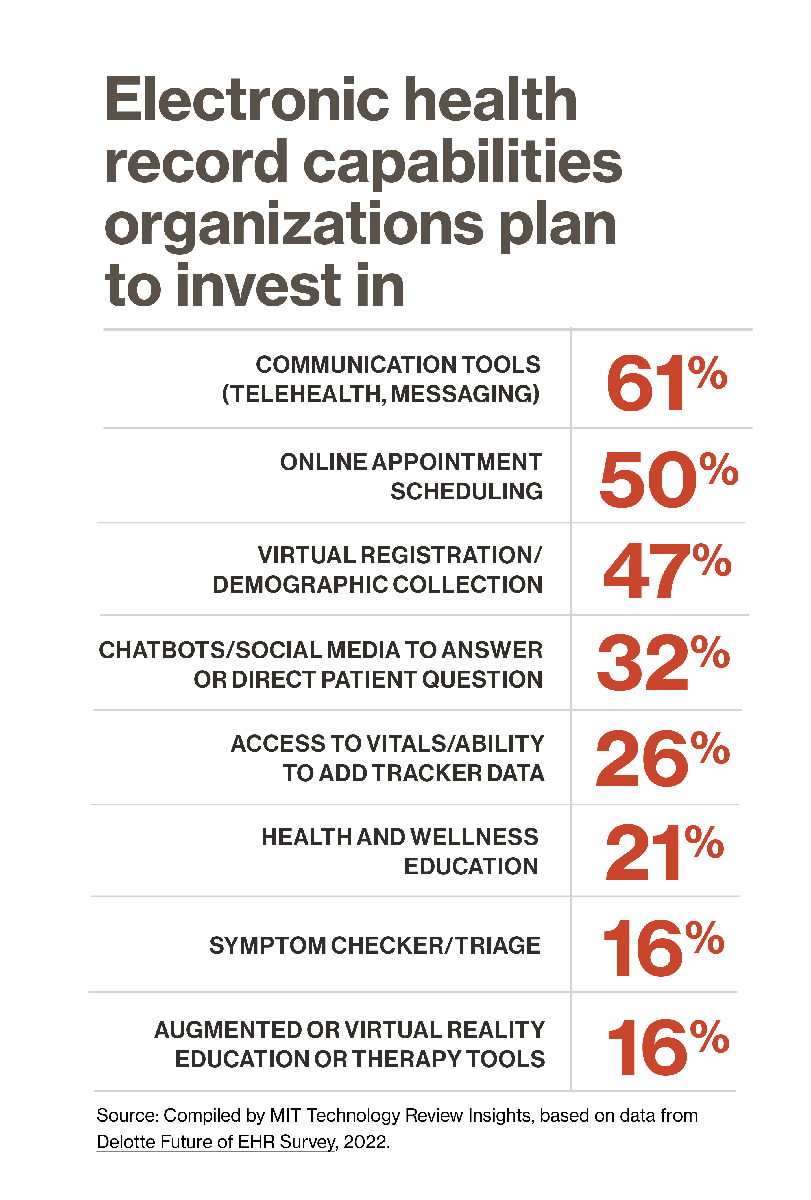A new operating system for health care
Dramatically better integration, however, is coming in the not-so-distant future, Sutariya says. And when it does, today’s health information management will seem as antiquated as sending a telegram. “The cloud infrastructure that’s becoming ubiquitous is going to unleash that potential,” Sutariya says. “If you choose to share your data, your doctor will know about your steps and your stress level from the apps you use, and smart pill packs will be able to record whether you’re taking your medication. If you have chest pain, paramedics will be able to access your records in the ambulance, and they’ll exchange pre-hospital intervention history with the receiving hospital. The ER doctor will have your treatment already staged because they’ve got your complete risk profile, and they’ll get you right to the cath lab.”
A new understanding of the power of connected health data may kick off this shift. In the U.S., for example, the historically decentralized nature of health care has been a blocker, but recent legislation mandating interoperable core EHR data and asserting patients’ ownership of their health data is changing this.
“These two provisions have started a movement that I believe is unstoppable,” says Sutariya. “It’s a game changer already, because the law says providers must share this data anywhere that the patient—who owns the data—tells them to share it.” After an extended period of rulemaking, those provisions went into effect late in 2022.
This content was produced by Insights, the custom content arm of MIT Technology Review. It was not written by MIT Technology Review’s editorial staff.
Dramatically better integration, however, is coming in the not-so-distant future, Sutariya says. And when it does, today’s health information management will seem as antiquated as sending a telegram. “The cloud infrastructure that’s becoming ubiquitous is going to unleash that potential,” Sutariya says. “If you choose to share your data, your doctor will know about your steps and your stress level from the apps you use, and smart pill packs will be able to record whether you’re taking your medication. If you have chest pain, paramedics will be able to access your records in the ambulance, and they’ll exchange pre-hospital intervention history with the receiving hospital. The ER doctor will have your treatment already staged because they’ve got your complete risk profile, and they’ll get you right to the cath lab.”

A new understanding of the power of connected health data may kick off this shift. In the U.S., for example, the historically decentralized nature of health care has been a blocker, but recent legislation mandating interoperable core EHR data and asserting patients’ ownership of their health data is changing this.
“These two provisions have started a movement that I believe is unstoppable,” says Sutariya. “It’s a game changer already, because the law says providers must share this data anywhere that the patient—who owns the data—tells them to share it.” After an extended period of rulemaking, those provisions went into effect late in 2022.
This content was produced by Insights, the custom content arm of MIT Technology Review. It was not written by MIT Technology Review’s editorial staff.
